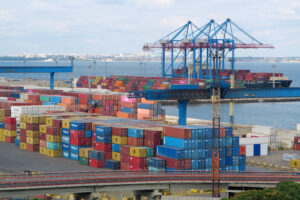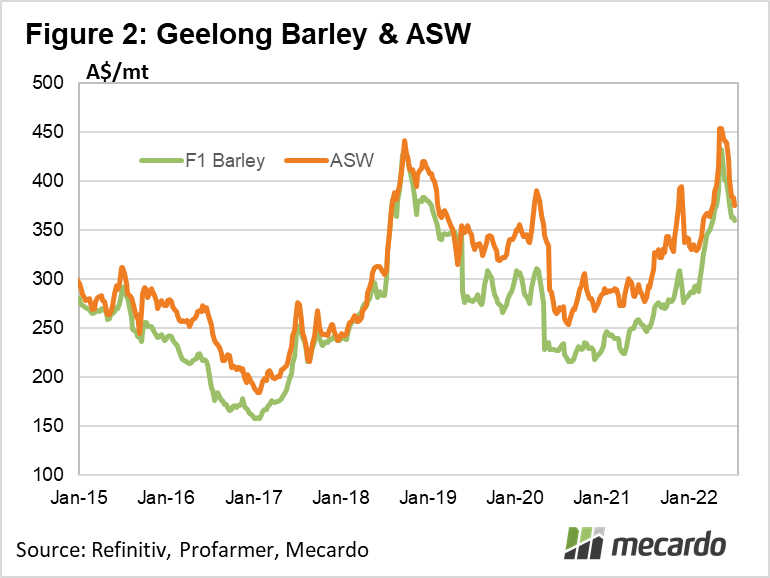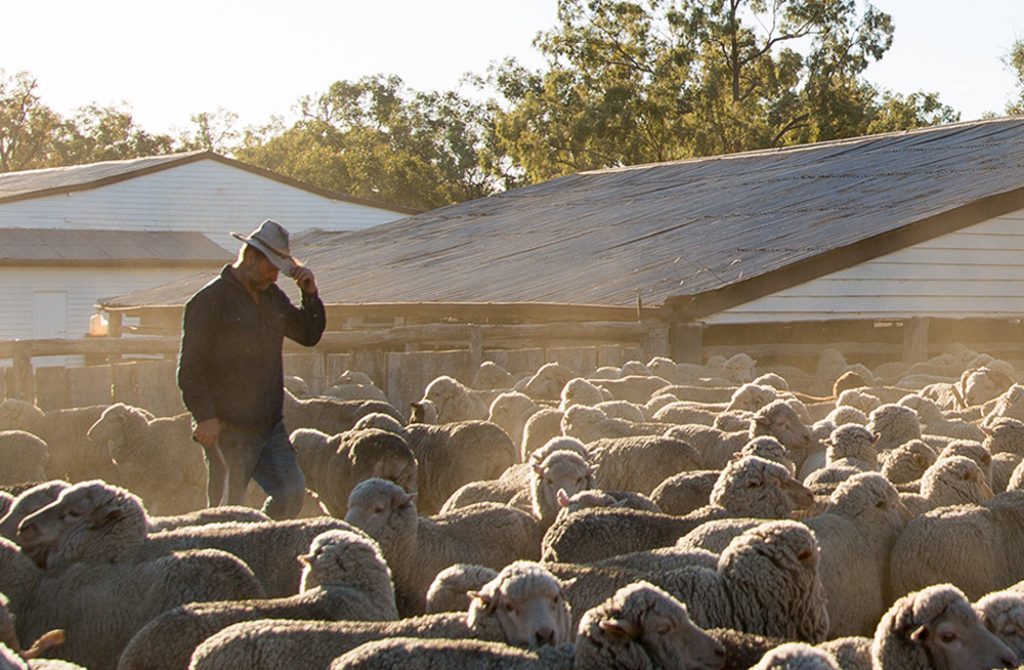
Feed grain prices in Australia have two main drivers. There is the world feed market, as, in a good year, over 60% of barley production is exported. There is plenty of feed wheat exported as well, and as such feed grains have to be priced at competitive levels to find buyers.
Corn is the world's biggest feed grain, in terms of traded volume, and the US is the world's biggest producer. There are swings in price spreads according to production levels in different countries, but we do know that when we have a lot of feed grain to sell, it can't be priced much higher than US corn.
Figure 1 shows the price of CME Corn Futures along with feed barley at Geelong. Strong local price premiums exist during drought years, when local supply is low, and demand is strong. Little feed is exported in these years. In strong harvests, like the last two, barley trades at a discount to corn.
The recent fall in corn prices has been largely matched by local barley. We still have a large amount to export, and another good harvest appears to be on the way.
The other driver of local feed grain prices is wheat values (figure 2). In the short term the relationship is governed by local supply and demand milling and feed wheats. When supplies of feed grain, and grain in general, is tight, feed varieties can trade at close to parity with milling grades. At other times spread can be up to $100/t, but usually sit in the $20-60/t range.
New crop barley is current priced around $360/t at port, CME Dec-22 Corn is at $357/t in our terms, and ASW wheat is $375/t at Geelong.
What does it mean?
The Australian Bureau of Agricultural and Resource Economics and Sciences (ABARES) is forecasting another large exportable surplus of barley this year, along with strong wheat exports. The current port price of barley at $360/t looks a bit high relative to both corn and wheat in a strong production year.
Grain consumers can manage upside in feed prices by using futures or swaps on either ASX wheat or CME corn, as there is potential for new crop feed grain prices to fall relative to both, which would result is a net grain price less than $360/t.
- Feed grain prices have been just as volatile as milling grades, having fallen in line with international markets.
- New crop barley is currently relatively expensive compared to milling wheat and corn.
- Consumers can start managing feed grain prices using corn swaps or ASX wheat futures.
Click on figure to expand
Click on figure to expand
Data sources: Refinitiv, Profarmer, CME, Mecardo.

Grains & Oilseeds
Nick Booth October 7, 2022

Grains & Oilseeds
Adrian Ladaniwskyj October 4, 2022

Grains & Oilseeds
Nick Booth September 30, 2022

Grains & Oilseeds
Adrian Ladaniwskyj September 29, 2022
You can have full premium access to all of our content with a monthly or annual subscription.
Alternatively, create a free account to access our Insights blog and two free premium article a month!
Independent analysis and outlook for wool, livestock and grain markets delivered to you as it's published
Join the Mecardo team for the Commodity Conversations podcast, where we provide short weekly market recaps and longer conversations with guests to discuss the drivers and trends in livestock, grain and fibre markets.
In this report for LiveCorp and MLA, we analysed the historical trends in the demographics of the Australian sheep flock, examining domestic factors that influence farm-level enterprise decision making.
We don't just bring you the most up to date market insights. Find out more about Mecardo's services including risk management advisory, modelling, benchmarking, research & consultancy.
vandivervaust1965.blogspot.com
Source: https://mecardo.com.au/what-price-feed-grain-this-year/













0 Response to "Grain and Feed Upgrade Grain Report Australia"
Enregistrer un commentaire